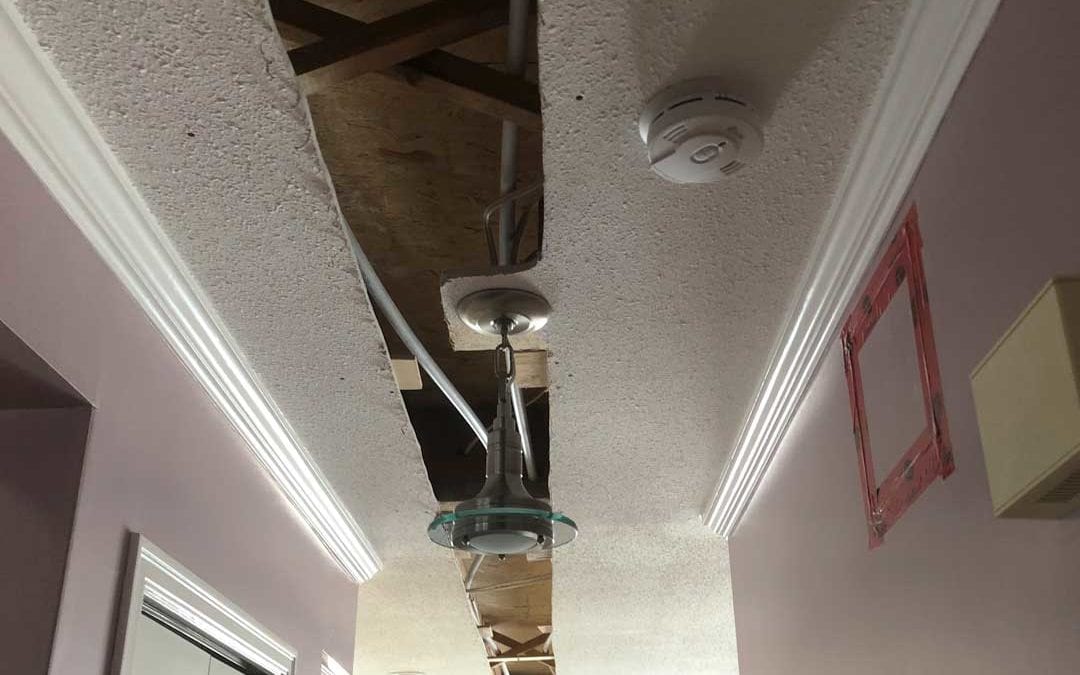Need Repair in The Great Vancouver Abbotsford Areas – Contact Us >
An In-depth Perspective from a Seasoned Drywall Contractor in Canada
In the vast landscape of construction, drywall contractors are the unsung heroes who transform a structure’s skeleton into a functional living or working space. With a meticulous approach and unparalleled skillset, these industry tradesmen play a crucial role in shaping the aesthetic and structural integrity of interiors. In this article, we delve into the world of drywall contracting in Canada, exploring topics like earnings, different materials, costs, texture trends, and the challenges faced by professionals in the field.
Earnings of Drywall Contractors in Canada
The earnings of drywall contractors in Canada vary considerably based on factors such as location, experience, and market demand. On average, a skilled drywall contractor can earn between $25 to $45 per hour. However, those with extensive experience and a solid reputation can command higher rates, sometimes exceeding $50 per hour. In addition to hourly wages, drywall contractors may also earn from project-based contracts, which can significantly boost their annual income.
Distinguishing Between Drywall and Gyprock
The terms “drywall” and “gyprock” are often used interchangeably, but they refer to the same thing: a building material used for interior walls and ceilings. Both drywall and gyprock consist of gypsum plaster sandwiched between two layers of paper. The primary difference is regional terminology. In Canada and the United States, it’s commonly referred to as “drywall,” while in Australia, it’s known as “gyprock.” The material and its applications remain the same.
Drywall vs. Gypsum Board: Is There a Difference?
Drywall and gypsum board are two terms often used interchangeably, leading to confusion among consumers. In reality, there is no difference between the two. Both drywall and gypsum board are composed of gypsum plaster and paper layers and serve the same purpose in construction. The choice of terminology can vary depending on the region or manufacturer, but the materials themselves are virtually identical.
Understanding the Cost of Drywall
The cost of drywall can fluctuate based on several factors, including thickness, brand, and location. On average, in Canada, a standard 4×8-foot sheet of half-inch thick drywall costs between $10 and $15. Therefore, the cost of four sheets of drywall would typically range from $40 to $60. It’s important to note that this cost doesn’t include additional expenses such as labor, fasteners, or finishing materials.
Drywall Texture Trends in 2023
The world of interior design is constantly evolving, and wall textures are no exception. In 2023, several drywall texture trends have gained popularity among homeowners and commercial property owners. These include:
- Venetian Plaster: This classic technique, originating in Italy, involves applying multiple layers of plaster to create a smooth, glossy finish with subtle variations in color.
- Textured Knockdown: A popular choice for contemporary interiors, this technique creates a textured, mottled finish achieved by spraying joint compound onto the surface and then “knocking it down” with a trowel.
- Rustic Wood Grain: Mimicking the appearance of weathered wood, this textured finish adds warmth and character to spaces.
- Geometric Patterns: Drywall contractors are using creative techniques to carve out geometric patterns on walls, offering a unique and modern look.
- Metallic Accents: Adding metallic pigments to the joint compound creates a shimmering, luxurious finish, perfect for accent walls.
The Most Expensive Drywall Finish
While the cost of drywall finishes can vary widely, one of the most expensive and labor-intensive options is the Venetian plaster finish. Achieving the authentic Venetian plaster look requires multiple coats, meticulous application, and skilled craftsmanship. This finish can cost anywhere from $8 to $20 per square foot, making it a premium choice for upscale homes and commercial spaces.
Dealing with Water-Damaged Drywall
Water damage is a common issue in buildings, and drywall contractors often encounter the challenge of repairing it. When addressing water-damaged drywall, the first step is to assess the extent of the damage. If it’s minor, a skilled contractor can often patch and repaint the affected area. However, for more extensive damage, the damaged sections may need to be cut out and replaced, followed by finishing and texture matching.
In conclusion, the world of drywall contracting in Canada is a dynamic and rewarding field that demands skill, precision, and adaptability. As we move into 2023, professionals in this industry continue to shape the way interiors look and function, keeping up with trends and techniques that meet the ever-evolving needs of their clients. Whether it’s mastering the art of texture or tackling the challenges of water-damaged drywall, drywall contractors play a vital role in creating the spaces we live and work in.





